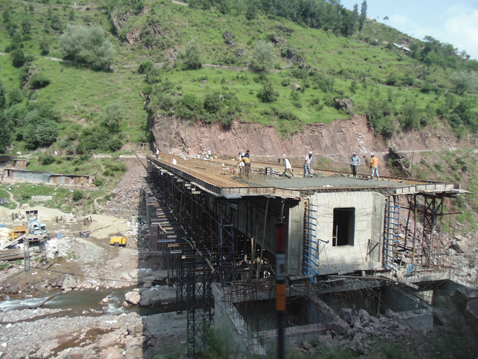 Globally, the EPC (engineering, procurement, construction) mode is adopted as an effective mode of project implementation. Unlike the divisible contracts method that was adopted by government utilities till some years ago, the EPC mode fixes single-point responsibility on the contractor, which augurs well for the developer as well as the contractor. Even if projects are developed on the PPP basis, the project construction per se is undertaken on EPC basis. The EPC mode also has a variant called EPCM where a single entity is responsible for the EPC aspects, and the project management. However, even EPCM contractors in turn engage an EPC contractor for project execution. The owner of the project, in this case, outsources even the project management aspect that would be in its purview in the pure EPC route.
Globally, the EPC (engineering, procurement, construction) mode is adopted as an effective mode of project implementation. Unlike the divisible contracts method that was adopted by government utilities till some years ago, the EPC mode fixes single-point responsibility on the contractor, which augurs well for the developer as well as the contractor. Even if projects are developed on the PPP basis, the project construction per se is undertaken on EPC basis. The EPC mode also has a variant called EPCM where a single entity is responsible for the EPC aspects, and the project management. However, even EPCM contractors in turn engage an EPC contractor for project execution. The owner of the project, in this case, outsources even the project management aspect that would be in its purview in the pure EPC route.
With India committed to massive infrastructure upgrade across various segments covering roads, railway, seaports, airports, metro rail, power generation plants, power transmission lines, urban utilities, etc, the EPC route is gaining prominence. In this special story, Projectmonitor interacted with leading EPC contractors to get an understanding of the challenges ahead of them when it comes to execution of government projects.
All the respondents surveyed had a unanimous view that the government could do much better in terms of land acquisition—which is securing right of way—and in obtaining clearances. Vimal Kejriwal, MD & CEO, KEC International Ltd, which is a global EPC player in the power transmission space, felt, “Significant time of the contractor is lost in obtaining approvals from various levels before the final approval is granted. Due to this, the project completion schedule is completely disrupted leading to cost overruns for the contractor.” In the context of power transmission Kejriwal made another strong point which was of providing infrastructure status to the power transmission industry. “Transmission line contractors are deprived of benefits that other sectors like roads, railways and ports enjoy,” he noted.
In the EPC mode, the project risk, or the risk of construction, is transferred or shared by the government and the contractor. However, the contractor often has the additional responsibility of operations & management. This is often true in municipal services like water supply. Rishabh Sethi, Executive Director & COO, SPML Infra, a diversified EPC company with a strong presence in urban utility services, observed, “Government provides funding for infrastructure development, but municipalities face challenges in arranging funds for O&M, a crucial factor in urban utility services. Private funding is negligible and limited commercial funding from banks etc is unable to meet the requirement.”
While land acquisition and securing right of way is an all-pervading hurdle in the EPC contractor’s path, the situation is exacerbated in northeast India. In many respects, northeast is distinctly different from the rest of India. The generally hilly topography militates against project execution, and more so of land-centric projects like roads and power transmission lines. Besides, the element of social unrest is often more pronounced than in most parts of India. Even the fact that northeast India shares international borders, the political situation is often sensitive. Wallamphang Roy, Managing Director, Power Carriers (India) Pvt Ltd, a northeast India-centric power transmission contractor, felt that northeast India’s hydropower potential is still grossly untapped and it is a matter of time before clean hydropower will need to be transported to other parts of India. Power transmission therefore will be a key area. “Non-availability of funds, right-of-way challenges and climatic adversities have been major stumbling blocks for executing of transmission infrastructure projects,” felt Roy. Monsoon in the northeast is severe and can last for up to five months in a year, making large areas vulnerable to floods and landslides. However, “if careful planning is done, taking into consideration all the challenges, projects can be executed better even in difficult areas,” assured Roy.
The government in this year’s budget has proposed the plug-and-play method for five ultra mega power projects. In this, the contractor will get a largely encumbrance-free project where all pre-project formalities would be completed by the government before handing over the project. While this should have always been the case, and that too in all infrastructure projects, at least the government has tacitly admitted that contractors are bogged down by hurdles emanating from the government’s ineptitude. An “all clear” project is the contractor’s right and the government’s duty.











